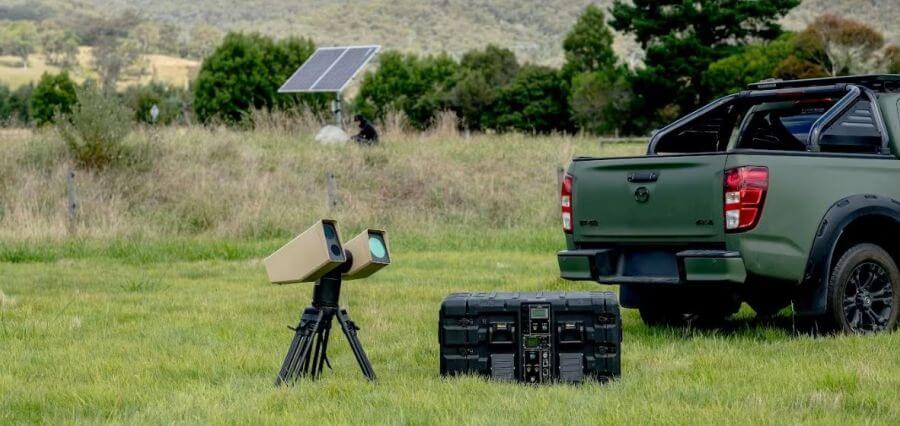According to its makers, Melbourne-based AIM Defence, a battery-powered system can bring down a drone travelling at 100km/h.
The Australian Defence Force has purchased a $5 million laser-based counter-drone device.
It acquired the Fractl:2 system, which its Australian developers claim has the precision to shoot down a drone travelling at 100km/h and can be controlled remotely.
Drones provide a growing menace in modern warfare, having been widely used in the Ukraine conflict and utilized by Houthi rebels to threaten international trade in Red Sea. According to the manufacturer, the system runs on batteries and can fire down 50 drones with a single charge.
The laser technology, designed by Melbourne-based AIM Defence, eliminates the need for ammunition.
The Australian government paid $4.9 million for the prototype from AIM Defence, which claims to have defeated over 200 drones indoors and outdoors. According to insiders, AIM Defence is investing in expanding its manufacturing facilities in Melbourne.
The prototype technology is scheduled to be “in the hands” of ADF personnel by mid-2024.
Jae Daniel, a laser scientist, and Jessica Glenn, a technology entrepreneur, founded the firm, which was chosen to participate in an international counter-drone exercise by the Canadian Defense Department this year.
The Counter Uncrewed Aerial Systems Sandbox 2024 will be held in Canada from May to June, with 15 firms from around the world, including one from Australia, EOS Defence Systems.
Sean O’Byrne, an aerospace engineering professor at the Australian National University, stated that he was unaware of any similar technology being implemented to date, despite the fact that a lot of corporations around the world were interested in space.
While O’Byrne has not yet seen AIM Defence’s technology, he stated that direct energy is a “horizon technology” in the sector, meaning that it is relatively new in terms of deployment.
“It’s an old technology in terms of the idea, but the systems have not been powerful enough and there are various technical challenges in adaptive optics to focus on a moving target,” he went on to say.
“The target might be moving up, down, left, right, towards you or away from you.”You must have a focusable optical system, which presents technological problems as well as challenges in rapidly delivering adequate power to the focus point. Building a portable platform that can do all of those things is challenging.”
Read More: https://ciooutlookmagazine.com/





